The Hajj is one of the five pillars of Islam. This is the most important event of all Muslims' lives. Prescribed by the Sharia, it is the foundation of all Islamic culture and a pilgrimage of believers to the main mosque located in Saudi Arabia. The Hajj takes place during the twelfth Islamic month called Dhu al-Hijjah.
Now there are many companies, which help to get to Saudi Arabia. Previously, a trip to the Hajj had started six months before the event. People were going through a lot of checks and challenging their staying and will powers. Let's go back a few centuries ago together and find out how the Hajj was carried out.
The Hajj rite dates back to the Quranic story of Ibrahim, who was ordered by God to sacrifice his beloved son. On his way, Ibrahim met Iblis several times who tried to dissuade the prophet from his intention. Ibrahim was throwing stones into Iblis. In memory of this story, the pilgrim has to pick up the stones three times and throw them into special pillars that represent Shaytan (Satan). After the casting of stones, pilgrims slaughter animals, cut their hair, come out of the Ihram state and change the dress.
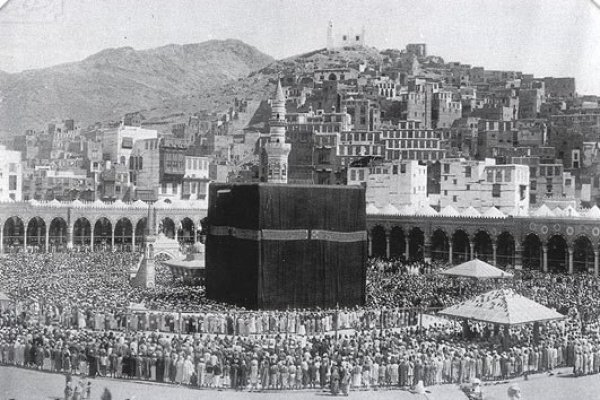
Photo 1907 al-Haram mosque in Mecca / Public domain
In the old days, the average Muslim needed to mobilize all his physical and spiritual health to reach the Holy cities of Mecca and Medina. Now, people’s living standards are being improved every year. Simultaneously the conditions of following one of the five pillars of Islam are becoming more comfortable.
Three routes to Mecca
The peoples inhabiting the modern territory of the Russian Federation have known Islam for a long time. For example, in the 22nd year of the Hijrah Dagestani Derbent became part of the Caliphate. And many years later this is where the largest and highly developed states as Volga Bulgaria, the Golden Horde, the Kazan, Astrakhan, Crimean, Siberian khanates appeared.
At that time, the number of pilgrims was much lower due to geographical and political obstacles. The opportunity to go to the Hajj was prerogative of a separate group – Muslim scholars, merchants, politicians. It was the Hajj that like a thin thread was connecting the Russian Muslim community with Islamic countries. This was not only the introduction to the culture of other peoples but also the exchange of ideas, adoption and adaptation of the achievements of Islamic civilization.
Since we are talking about the ruling elite, we must recall some interesting facts from the history of the Kazan khanate. For example, in 1494, Kazan Queen Nursultan went to the Hajj through Cairo. In 1517 she repeated her trip. In 1524 Khan Sahib Giray left Kazan throne to his nephew Safa Giray in order to go to the Hajj to Saudi Arabia. Shihabeddin Marjani from Kazan, Sheikh Kunta-Haji Kishiev, Imam Shamil, Sheikh Zainullah Ishan Rasulev from Bashkiria and many others also committed the Hajj to Mecca.
As for the Russian legislation, the first legal document, which dealt with the Hajj, appeared only in 1803. It was about permission to Bukharans living in Russia to go to the Hajj. However, Muslims of the Russian Empire showed their desire to go to the Hajj much earlier: we are talking about the Crimean Tatars, who have retained a number of privileges, including the pilgrimage to the Holy places.
Only on July 27, 1855, Russians were given the right to have foreign passports. It is unknown what document the Russian pilgrim had used previously to commit the Hajj.
In the XIX century, the pilgrimage of Russian Muslims was made by three generally accepted routes.
1. Across Transcaucasia and Northern Persia, through the junction of Kermanshah and the border town to Turkey Khanaqin, towards Baghdad — with visiting Qazvin, Karbala, Najaf (memorable places for Shiites), and then through the sands of Arabia — to Mecca and Medina.
2. Through Samarkand and Bukhara to Afghanistan - through Mazar-e-Sharif, Kabul and Peshawar to Bombay, and then by sea to Jeddah or Yanbu - harbors for Mecca and Medina.
3. From the Black sea ports via Istanbul and Suez to Jeddah or Yanbu and then to Mecca and Medina.

Fort of the Ottoman Empire in Mada'in Saleh, 1907 / Public Domain
The number of pilgrims going to Hajj using the first route was about 12-15 thousand people annually. As for the direction through Bukhara to Afghanistan, the number of future Hajjis differed significantly – 4-7 thousand people, mostly residents of Central Asia.
And the third way, which was the easiest and shortest, from the ports of the Black Sea to Istanbul and Suez, was used by all Russian Tatars, Caucasian Sunnis and Kazakhs close to inner Russia - - about 2-3 thousand pilgrims.
The Charter about passports and mitigation the relation to the Hajj
By the end of the XIX century, the Imperial power in Russia developed a certain political interest in the sphere of religious pilgrimage, even taking a number of specific actions to streamline it. One of the reasons for this, according to Lieutenant V.I. Yarovoy-Ravskiy is that the " returning from the Hajj, as is generally observed, is markedly reborn in the spirit and mood, what is far from meeting the goals of the Russian government."
The negative attitude to the Hajj of the Russian authorities was also facilitated by the political background of the Hejaz's presence in the Ottoman Empire. So, on the eve of the Russian-Turkish war in 1877-78, the Sharif of Mecca issued a special fatwa, which demanded the Sultan to declare war with Russia.
Those returning from the Hajj were called Hajji. They were of sizeable reputation among fellow believers because they themselves were undergoing a process of spiritual renewal, and their visit to Muslim shrines caused among the people a sense of special respect for them.
As for the number of Russian Muslim pilgrims, according to Robert Landa, "every year 9-10 thousand Russian Muslim made the Hajj (pilgrimage) to Mecca and Medina. At least a third of them were pilgrims from the Fergana valley".
In 1894, the Consulate in Jeddah conducted a survey of 1795 Russian pilgrims. It turned out that 75% of them came from Central Asia, 46 people were the Tatars. According to the Consulate, the total number of pilgrims from Russia that year was 3349 people.
Apparently, the statement by Abdulaziz Davletshin, who wrote, as the results of his trip to the Hajj in 1898, that the number of actually Russian-citizens Hajjis never exceeds 4 thousand people, was close to the truth. This information should be used as a guide to the number of pilgrims from Russia in the XIX century.
According to the Russian Consulate in Jeddah, the number of pilgrims in 1901 was 6 thousand, in 1902 — 16 thousand, in 1903 — about 5 thousand people.
According to the Davletshin's reports favored by the Emperor, the Russian authorities were gradually softening their attitude to the Hajj, and the fee for a foreign passport was reduced. In 1903, the Charter on passports included temporary rules for Muslim pilgrims, which stated that the followers of Islam were issued passports of a special sample. Also, requirements for medical and sanitary cleaning were established - quarantine and medical monitoring institutions were responsible for them. Thus, at the beginning of the XX century, the Russian authorities had begun to support going to the Hajj. The Russian Ambassador to Istanbul Nikolai Charykov wrote about it in 1911: "Our government, as we know, is far from being indifferent to the Hajj committed not only by our citizens but also by Muslims of the Central Asian states adjacent to Russia, using Russian railways and steamships for going to Mecca. Our government is concerned about the safety, convenience, cheapness and sanitary provision of the Hajj, and for this purpose, among other things, has organized and allowed a whole system of preferential steamship communications through Constantinople with the active participation of Russian consular offices."
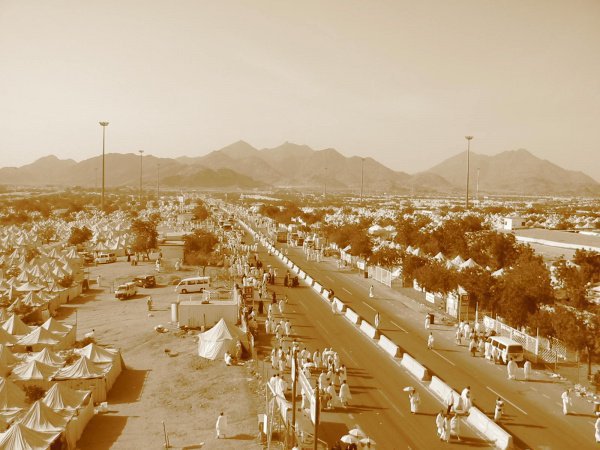
Arafat, 2007. Author: Ali Imran, Creative Commons BY-SA 2.5
Before the revolution, the Holy Islamic places were part of the Ottoman Empire, and Mecca itself was ruled by Sharifs. So-called "Dalils" were in charge of the Hajj organization and were specialized in Muslim peoples. Dalils were approved by the written firmans of the Sharif of Mecca.
For example, according to the report of the Russian Consul General in Jeddah Levitsky, in 1893 there was a list of dalils separately for Andijans, Oshs, Khivas, Circassians, Crimean Tatars, Dagestanis, Kokands, Kazakhs and Kazan Tatars, Bukharans, etc. So, Kazan Tatars' dalils were the descendants of Meccan Ali Suruj, his wakil in Jeddah was the Yemeni Abdurrasul. The same year in Medina, Sayid Shafi was a dalil for the Kazan Tatars. Dalils themselves annually went to Russia to gather Hajjis or sent their 2-3 representatives, who on their way were selling Zamzam water, rosary, dates, and other good. But most importantly – they were inviting people on a pilgrimage. Thus, in the XIX century for each nationality, there were responsible people, i.e. dalils, who were interested in a larger influx of Hajjis from the areas under their supervision. They also were meeting pilgrims on their arrival and making all the Hajj's arrangements. And all these were done not disinterested.
In this regard, it is impossible not to pay attention to the book of Gali Riza "Guide for Hajjis or a story about how they are deceived", which was published in Kazan in 1909. The book provides all the prices, gives the list of reliable hotels and reveals how dalils deceive Hajjis.
New routes
In the XX century, there were new routes of the Hajj. It became possible to get from Moscow by train to Warsaw, Vienna and Istanbul. The trip took 6 days, and the ticket cost was 100 rubles. Steamboats navigated from Batumi, Sevastopol and Odessa, and there were non-stop tours by sea directly to Jeddah. The largest number of pilgrims traveled through Odessa, because there was the Turkish Consulate, which was issuing visas "To Mecca through Istanbul." In Odessa, a Tatar mosque was built, its Imam Sabirzhan Safarov supported Hajjis as much as he could.
M. Nikolsky in his article "Pilgrimage of Muslims to Mecca" in 1911 wrote that the number of pilgrims from Russia "in recent years ranges from 6-10 thousand people". The author noted that "as a rule, Russian Hajjis come to Arabia two months before the Hajj starts mainly through Odessa and Sevastopol, rarely through Batumi". Special pilgrimage steamboats of the Russian Steam Navigation and Trading Company and Russian Volunteer Fleet (Dobrovolny Flot) were for their disposal.
The trip through Afghanistan was 5 times cheaper than through Istanbul. Talking about Russians who stayed to live in Mecca, they were mainly from Turkestan and Bukhara. But at the same time, "Muslims from Russia, who have settled in Hejaz, usually do not lose touch with their countrymen, constantly inviting them to the Hajj. Sometimes they travel to Russia to receive Bedel-Hajj (Hajj al-Badal, proxy Hajj, i.e., Hajj on behalf of another)". He wrote that the fee for Bedel-Hajj in Russia were not less than one thousand rubles. In Russia, such type of Hajj was widespread in Kazan, Orenburg and Ufa provinces. Turkestanis made it quite rare.
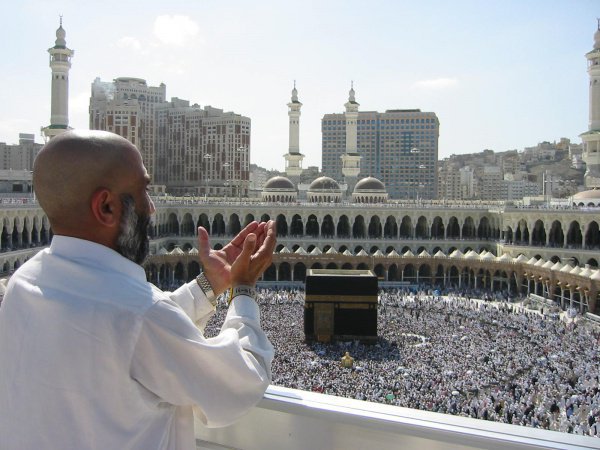
Arafat, 2007. Author: Ali Imran, Creative Commons BY-SA 2.5
Russian Consulate in Jeddah
Waqf infrastructure had formatted in Mecca and Medina gradually. At least 9 Waqf houses for Kazan Tatars pilgrims in Mecca were known. There were also Kazan mosque and madrassa, 3 waqf houses in Medina. Immigrants from Russia established more than 100 endowments in Mecca and Jeddah.
The Russian Consulate in Jeddah played a positive role in the development of the Hajj organization from Russia. The first Consul was Tatar Shagymurad Miryasovich Ibragimov, who was appointed by the superior decree of November 22, 1890. The instruction clearly spelled out the main duty of the Consul – "the protection of our pilgrims, who annually, in a significant number, go to worship Muslim shrines in Mecca and Medina". The Consul was ordered to "understand and share their (pilgrims') needs, being with them and in the closest relations".
In 1895, the Consulate's Dragoman (translator) was Tatar Hajji Shakirzyan Ishayev.
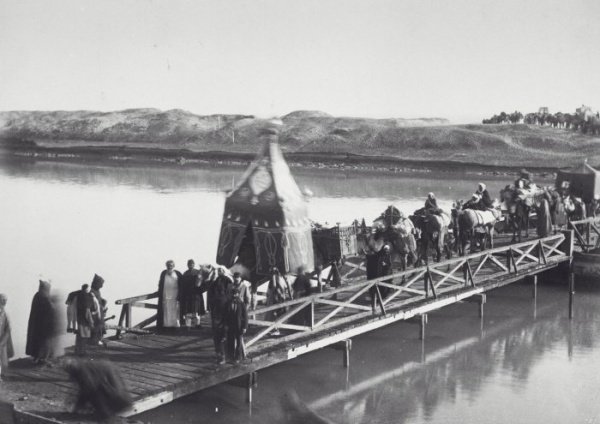
Caravan of pilgrims moving through the Suez canal, 1885, Tropen Museum / Creative Commons BY-SA 3.0
Taking care of Hajjis, the Consulate had developed a system of deposits left there by pilgrims. For example, in the Hajj season of 1907, almost 50 thousand rubles were left. This method made it easier to solve the issues of safety of funds for the return trip and in case of death, when the money was sent back to their homeland.
The Consulate in Jeddah worked until World War I in 1914.
The Consulate was reopened during the Soviet regime. In 1924, the Soviet government established diplomatic relations with the Hejaz and opened the Consulate in Jeddah.
The Kingdom of Saudi Arabia and a new round in religious cooperation
In February 1926, the USSR recognized the Kingdom of Hejaz, the Sultanate of Nejd and the annexed territories – the lands since September 1932 became known as the Kingdom of Saudi Arabia. This recognition was made by the Tatar Soviet Consul Karim Khakimov. And the USSR was the first state to establish diplomatic relations with the new Kingdom.
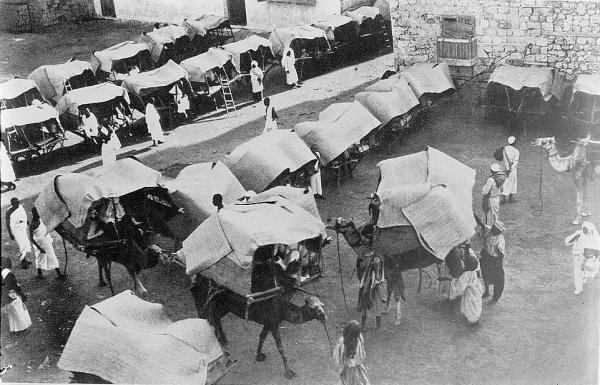
Camels with tents for pilgrims, 1910 / Public Domain
In 1925 Khakimov performed the Umrah. Two years later, after a long break of 10 years, pilgrims started using the Odessa seaport again. Thus, the Hajj from the USSR continued until the complete closure of the southern borders of the USSR in the early 30-ies, although, of course, before that, there was a sharp reduction in the number of pilgrims.
In 1928, the Saudi authorities banned access to Mecca for "Europeans who considered themselves Muslims", but in fact denied religion. According to historians, the second Soviet Consul Kazakh Nazir Tyuryakulov was the last Soviet citizen who legally committed the Hajj at this time. His Hajj was authorized by People's Commissariat for Foreign Affairs of the USSR. The Tatar emigrant writer Gayaz Iskhaki wrote about this event: "The car decorated with red flags with the hammer and sickle appeared on the streets of Mecca in the never-ending sound of the horn; "after attending all festive worshiping and completing all the rites, Mr. Tyuryakulov went to Medina in order to visit the grave of the Prophet". Gayaz Iskhaki wrote that when the Consul was asked " why pilgrims from Russia no longer come, which used to be so many", he without the slightest embarrassment stated that these pilgrims can come from Russia only by sea.
During the visit of Emir Faisal bin Abdulaziz to the USSR in 1932, questions on ensuring the arrival of the USSR Hajji in the number of 10-15 thousand people were raised. However, the Soviet government ignored these questions. In 1938, the Soviet mission to Jeddah, led by Karim Khakimov for the last three years, was withdrawn. The Hajj from the USSR was resumed only in 1945, when a small group of Hajjis headed by mufti Ishan Babakhanov could go to the Hajj. From 1945 to 1990, about 900 Soviet citizens performed the Hajj.
In 1953, Ziyauddin Babakhanov headed another group of pilgrims to Mecca, and during this trip met with the king of Saudi Arabia Abdulaziz Ibn Saud, who warmly welcomed Russian Muslims. The same year, Babakhanov agreed with the rector of Al-Azhar University on the beginning of admission of Soviet students. In 1961, the Department of international relations was opened at the Spiritual Administration of the Muslims of Central Asia (SADUM). It was in charge of the issues of pilgrimage, reception and departure of delegations, as well as correspondence with foreign Muslims.
Ilmira Gafiatullina
